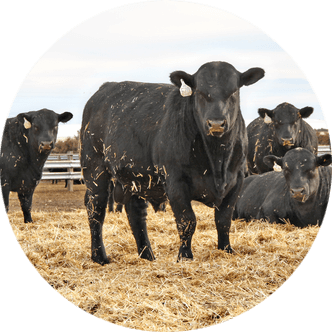Negative effects of ongoing government shutdown continue
Since going into effect on Oct. 1, the ongoing government shutdown has disrupted services, impacted critical programs and caused missed paychecks across the nation.
On Oct. 28, the Senate failed to reopen the federal government for the 13th time, falling short of the 60-vote threshold in a 54-to-45 vote. As the second-longest lapse in federal funding approaches the one-month mark, the effects of the ongoing government shutdown continue to ripple throughout the country.
The U.S. Department of Agriculture (USDA) has warned funding for the Supplemental Nutrition Assistance Program (SNAP) is running out, leaving roughly 42 million Americans to wonder what the upcoming month will look like without federal food assistance benefits, which usually are administered on the first of the month.
Additionally, air traffic controllers missed their first full paychecks at the end of the month and roughly 750,000 government workers remain furloughed, uncertain of the status of their jobs.
SNAP suffers
On Oct. 24, the USDA posted a notice on their website stating funding for federal food aid in the form of SNAP benefits – also called food stamps – would expire on Nov. 1 if the government failed to reopen.
“Senate Democrats have now voted 12 times to not fund the food stamp program, also known as SNAP,” the message states. “Bottom line, the well has run dry. At this time, there will be no benefits issued on Nov. 1.”
The message further describes the shutdown as “reaching an inflection point,” wherein Senate Democrats must vote to reopen the government “so mothers, babies and the most vulnerable can receive critical nutrition assistance.”
According to U.S. Secretary of Agriculture Brooke Rollins, the total cost of running the SNAP program in November would cost more than $9 billion nationwide. Roughly 42 million Americans rely on SNAP benefits to supplement their grocery bills, and of these beneficiaries, nearly 39 percent are children, according to a report by USA Today.
With approximately 28,000 Wyoming residents set to be affected by the lapse in benefits, the State Department of Family Services, which is responsible for administering SNAP in Wyoming, is working closely with the Food Bank of Wyoming, the Wyoming 211 Hotline and other community partners to help connect people in need with resources around the state, according to an Oct. 28 Wyoming Public Radio article written by Hannah Habermann.
According to an Oct. 29 article for K2 Radio written by Kolby Fedore, U.S. Sen. Cynthia Lummis (R-WY) has backed legislation aimed at protecting SNAP benefits. The bipartisan Keep SNAP Funded Act was introduced by Sen. Josh Hawley (R-MO) on Oct. 21 and would ensure uninterrupted SNAP payments during the shutdown in the form of retroactive funding.
“A clean continuing resolution (CR) is the only way to ensure SNAP remains funded, federal law enforcement and air traffic controllers get paid and small business owners, ranchers and farmers have access to critical loans,” Lummis says. “Until five more Democrats join us in voting for the clean CR, I will, of course, support legislation to ensure no child in Wyoming goes to bed hungry during the shutdown.”
Federal furloughs
The shutdown has also impacted air traffic controllers and Transportation Security Administration workers, who have been working without full pay since the beginning of the shutdown and missed their first full paychecks during the final week of October.
Due to the essential nature of their jobs, these employees were excluded from furloughs which kept other federal employees from work – and pay – throughout October. Instead, they received partial paychecks, according to NBC News, up until the most recent payday which reflected zero-dollar paystubs.
As the holiday season approaches, industry representatives are citing mounting concerns about the status and safety of air travel as employees turn their attention to making ends meet.
“Instead of focusing on the safety of the American flying public, they’re now focusing on what they can’t afford to pay,” Nick Daniels, president of the National Association of Air Traffic Controllers, tells CNN News.
Additionally, roughly 750,000 federal workers who were affected by furloughs, including employees of the U.S. Forest Service and National Park Service, continue to face mounting uncertainty about their next paychecks amidst the ongoing shutdown.
What’s next?
As of Oct. 29, the Senate remains in session but a 14th vote to reopen the government has not been planned.
With Senate Republicans and Democrats struggling to find common ground, the end of the shutdown remains out of sight.
The timeline is fast approaching that of the longest government shutdown in history, which occurred during President Donald Trump’s first term and lasted 34 days from Dec. 22, 2018 to Jan. 22, 2019. If a deal is not reached by Nov. 4, the current shutdown will become the longest ever recorded.
With the Thanksgiving holiday approaching, the effects of SNAP cancellation, missed paychecks and air travel disruption are sure to be felt in great magnitude across the nation should the Senate fail to reach an agreement.
This story is still developing and details may change as new information becomes available.
Grace Skavdahl is the editor of the Wyoming Livestock Roundup. Send comments on this article to roundup@wylr.net.





